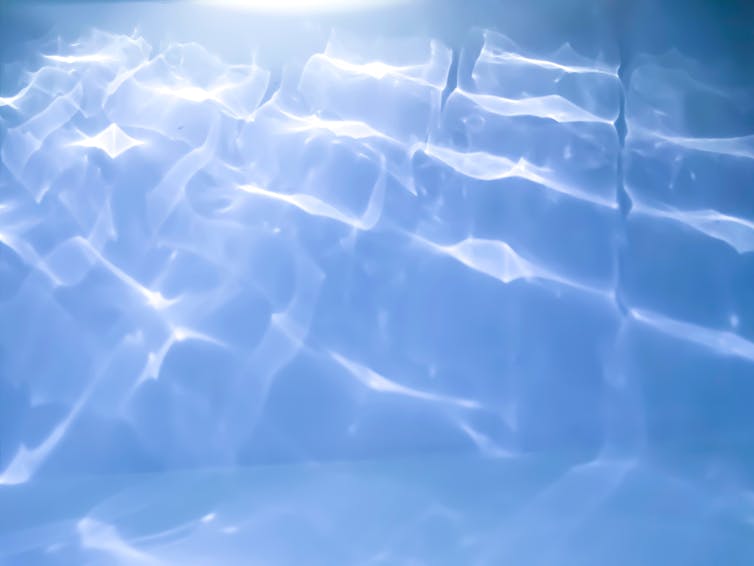There has been plenty of rain, sweat and tears shed at the Paris Olympics this week. But the pool at the heart of La Defénce Arena has suffered a drought of world records that has athletes and officials scratching their heads.
After five days, Paris 2024 has seen only a single world record fall in a swimming event. That compares with six new swimming world records set at Tokyo in 2021 and eight at Rio in 2018. Even the much-hyped women’s 400 metre freestyle – billed as the “race of the century” – failed to topple any personal bests from the three most recent world-record holders, Ariarne Titmus (Australia), Summer McIntosh (Canada) and Katie Ledecky (United States).
To earn a spot on the winners’ podium, of course, place – not pace – is what matters. But the near-absence of the letters WR alongside any of the finishing times on the Olympic scoreboard has coaches, competitors and commentators searching for a culprit.
Several athletes, including Titmus, have pointed to problems with the accommodation, food and transport at the games. And some are pointing to the Olympic pool itself with cries of “J'accuse…!”
The slow pool theory
It is undeniable that the pool at La Défence Arena is shallower than at recent Olympics. It’s 2.15m deep – deeper than the required minimum of 2m but quite a bit shallower than the standard 3m used at the Tokyo and Rio games.
Why would this make a difference? Well, when swimmers dive into the pool and power through the water, they naturally create waves that radiate outwards. Some of these waves will propagate along the surface of the pool and be damped by gutters at the edge. Others will travel downward, bounce off the bottom of the pool, and return to the surface to create turbulence.
Turbulence can slow a swimmer down in two ways. First, it creates a choppy pool surface that can disrupt a swimmer’s rhythm and reduce their speed.
Second, turbulence increases the effect of water drag by dissipating the swimmer’s momentum – the water motion literally “sucks” the speed from the swimmer.
The slow pool theory says the shallower pool means more waves bounce back to the surface, creating more turbulence and slowing swimmers down. But does it hold water?
Not according to Roberto Colletto, chief executive of the Italian company that constructed the pool in Paris. “On the technical side, there is no problem with the pool,” he told French broadcaster RMC Sport.
And scientifically speaking, the theory has some holes. One problem is that the waves bouncing off the pool bottom are quite different from the ones that travel across the surface. Subsurface waves are essentially sound waves generated by differences in water pressure.
Sound waves travel at about 1,500m per second in water. In a 2.15m-deep pool, a sound wave takes a little under 3 milliseconds to bounce off the bottom and return to the surface, compared with 4 milliseconds in a 3m pool. This millisecond difference in travel time likely has a negligible effect on the generation of turbulence at the pool surface.
On the surface
Water depth does have an effect on the waves at the pool surface, however. Surface waves travel more slowly in shallow water – which is why you see ocean waves piling up and breaking as they approach the beach.
So the waves the swimmers are creating at the surface of the competition pool in Paris will be travelling marginally more slowly than the waves in a 3m-deep pool.
Elite swimmers can take advantage of the surface waves they generate in the pool. By adjusting their swimming speed, they can create a wave that has a wavelength close to their own body length. This means the swimmer can position themselves between two crests to effectively “surf” the wave.
This critical speed, known as “hull velocity”, is well known in sailing. For elite middle- and long-distance swimmers, swimming at their own personal hull velocity can save energy – and win races.

Because the competition pool at the Paris Olympics is shallower than a standard 3m pool, the hull velocity of each swimmer will be slightly slower. So it is possible that some of the swimmers – especially in middle-distance races such as the 400m freestyle – may unconsciously be adjusting their pace to match the slower hull velocity. But, since the effect is the same for all competitors, no one will have an unfair advantage.
That’s only one possible explanation for the dreaded “slow pool”. It’s also possible that the perception of a slow pool has a larger effect than the reality.
As some have pointed out, the Australian Olympic Trials at the Brisbane Aquatic Centre resulted in a new world record in the women’s 200m freestyle – despite the pool being only 2m deep.
Faster, higher, stronger
It’s also possible swimmers are approaching the limits of human performance – at least until we work out how to break those limits once again.
New technology, improved nutrition and training, and greater access to clubs and coaches have boosted elite performance. But each toppled record reduces the likelihood of another, even better performance.
It shouldn’t be surprising that the rate of record-breaking performances will decrease over time.
In marathon running, for example, the men’s world record fell by 12 minutes over the 1950s and ‘60s. But further progress has been slow: it has only dropped another 8 minutes in the past 60 years, and now stubbornly hovers just above the two-hour mark. A statistical study published in 2019 predicted there is only a 1 in 4 chance anyone would beat the two-hour threshold in a competitive event by 2027.
Compared to track events, swimming seems to still have plenty of capacity to shatter records.
At Tokyo in 2021, the winning times in three-quarters of the swimming events were faster than at the Beijing Games in 2008. This was despite the use of swimming suits in the Beijing games that were later banned by the sport’s governing body. Over the past decade, swimming world records have been broken 43% more often than in Olympic track races.
The desire to push our limits, to break the unbreakable barrier, is at the heart of the Olympic motto: “Faster, higher, stronger.”
It just might take a little longer to get there.
Shane Keating receives funding from the Australian Research Council and the NSW Defence Innovation Network. He has also receives funding from industry and government partners including the Bureau of Meteorology, the Australian Maritime Safety Authority, and Naval Group Pacific.
This article was originally published on The Conversation. Read the original article.







